The Inca Trail to Machu Picchu is a fantastic adventure that takes hikers through beautiful Peruvian Andean landscapes and deep into the history of the Inca civilization. Known worldwide as a journey through history, this trek leads to various well-preserved archaeological sites, surrounded by beautiful mountains, en route to the Machu Picchu citadel.
The Inca Trail to Machu Picchu is one of South America's most popular trekking routes. Every year, thousands of people from all over the world come to Peru to hike the trail and explore the ruins of the ancient Inca citadel.
If you are considering embarking on this adventure, there are a few things you'll need to know. This article will provide an overview of what to expect on the Inca Trail, from the hike's difficulty to the best time of year to undertake the trek.
Table of Contents
The Ultimate Guide for the Inca Trail to Machu Picchu
Overview
This legendary hike to the Lost City of the Incas needs no introduction. The Inca Trail is regarded as one of the best hikes in the world, serving as a pilgrimage to a sacred city and a trek that can transform one's perspective on life.
Few places in the world are as inspiring and unique as Mount Kilimanjaro Trek, the Appalachian Trek, or the Tour du Mont Blanc. The Inca Trail hike possesses an additional feature that sets it apart as one of the most remarkable treks: it leads to a world-renowned destination, the Sacred Citadel of Machu Picchu.
What is the Inca Trail?
The Incas established the largest empire in South America. Named Tawantinsuyo, meaning 'four provinces of the sun,' this civilization originated in the Peruvian highlands in the early 13th century and lasted until the arrival of the Spaniards in 1532. At its zenith, the Inca Empire extended its rule over Colombia, Ecuador, Peru, Bolivia, Chile, and Argentina. To connect this vast territory, the Incas constructed an extensive network of trails called Qhapaq Nan, also known as the Inca Trails.
Cusco was the capital, the center, and the most important city of the empire, where the Inca kings resided. All trails radiated from Cusco to the south, north, east, and west. The Inca Trails facilitated trade, communication, food transportation, and the Inca Army's movement. The total length of the Inca Trail network is approximately 40,000 km (25,000 miles), and UNESCO has declared it a World Heritage Site.
The Classic Inca Trail to Machu Picchu represents just a small portion of this vast trail network in Tawantinsuyo. It spans a total length of 26 miles (42 kilometers) and was rediscovered in 1915 by the American explorer Hiram Bingham.
Why is the Inca Trail so famous?
The Classic Inca Trail Trek is famous for several reasons, including:
- Built by the Incas over 500 years ago, this trail is a living history lesson. It’s a deep dive into the life and culture of the ancient Incas.
- Expect to be wowed! You’ll encounter breathtaking mountains, lush forests, and ancient Inca sites.
- It’s no walk in the park! The trail is tough with steep climbs and high altitudes, but finishing it feels like a real achievement.
- Not everyone gets hike the Inca Trail. The government only allows 500 hikers each day, making it an exclusive adventure.
Brief History of the Inca Trail
During the height of the Inca Empire in the 15th century, Pachacuti, the 9th Inca King, built Machu Picchu and the Inca Trail. In 1532, Spanish conquistadors arrived in Peru, capturing and executing King Atahualpa in Cajamarca. The following year, Francisco Pizarro founded Cusco as a Spanish city and established Jauja as the first capital of the new colony on April 25, 1534. Later, he founded Lima, "The City of the Kings," on January 18, 1535.
The siege of Cusco, led by Manco Inca II's army against the Spanish under Hernando Pizarro, began on May 6, 1536, and lasted almost ten months but ultimately failed. In January 1537, the battle of Ollantaytambo saw Manco Inca's forces defeat the Spanish, but they eventually retreated to Vilcabamba, establishing a small, independent Inca state until 1572. During their retreat, Manco Inca ordered the destruction of trails and bridges to hinder Spanish pursuit.
In 1911, Hiram Bingham accidentally discovered Machu Picchu while searching for Vilcabamba. He believed Machu Picchu was Vilcabamba until his death. Machu Picchu was declared a World Heritage Site by UNESCO in 1983 and one of the World's New Seven Wonders in 2007. The Inca Trail faced closures due to a landslide in January 2020 and the COVID-19 pandemic but fully reopened by 2023, with 2024 expected to be as busy as pre-pandemic times.
›› If you're ready for the adventure, get your Inca Trail permits now.
What to Expect on the Inca Trail Hike?
Trail Options and Routes
The original Classic Inca Trail 4 days is a long and challenging hike, but there is also a shorter version known as the Short Inca Trail. So, which one should you choose?
- The Classic 4-Day Inca Trail is a 26-mile (42-kilometer) long hike and takes four days to complete. It starts at Km 82, in the Sacred Valley, and ends at Machu Picchu. Trekkers will pass through beautiful scenery along the way, including alpine forests, mountain valleys, and lush jungles. The trail also crosses several high-altitude passes, reaching a maximum elevation of 13,829 feet (4,215 meters).
- The Short Inca Trail to Machu Picchu is only 10 miles (16 kilometers) long and can be completed in just 1 day. It starts at Km 104 and ends at Machu Picchu. While this route doesn't offer the same variety of scenery as the longer Inca Trail, it still passes through some stunning landscapes, including cloud forests.
For this article, we will entirely cover the 4-DAY CLASSIC INCA TRAIL
Distance and Altitude
The Inca Trail stretches for about 26 miles (42 kilometers) from the Sacred Valley (km 82), through the Andes Mountains, to the lost city of Machu Picchu.
The Inca Trail elevation gain is around 3,000 feet (914 meters) from start to finish. The highest point on the trail is 13,828 feet (4,215 meters) at Dead Woman's Pass. Most of the elevation gain is in the first few days, with around 1,000 feet (305 meters) of ascent on Day 1 and 800 feet (244 meters) on Day 2. After that, the trial levels out somewhat, although there are still some ups and downs.
What's the highest point?
Dead Woman's Pass is a high mountain on the Inca Trail to Machu Picchu. It is 4,215 meters (13,829 ft) above sea level and is the highest point on the Inca Trail. The pass gets its name from its resemblance to a woman lying on her back. The pass is a challenging section of the Inca Trail, with steep ascents and descents.
Inca Trail Difficulty
How difficult is the Inca Trail? Hiking the Inca Trail can be challenging due to its length and high altitudes; however, its rewards make the experience worthwhile. Its breathtaking scenery will impress anyone while feeling great satisfaction from having accomplished something big!
Inca Trail Weather and Best Time to Hike
Weather
The weather in the Andes is unpredictable. You can be enjoying the sunshine, and in a matter of minutes, it can turn into rain. The Inca Trail is located in the Cloud Forest, a warm, humid, mountainous area that forms a barrier between the cold Andes and the dense Amazon. Regardless of the travel season, it's always best to be prepared for all types of weather: sun, rain, wind, cold, and even snow at Dead Women’s Pass.
Peru has two seasons—wet and dry—and the Inca Trail is closed for maintenance in February. The wet or rainy season lasts from November to April, with average daytime temperatures of 18 °C (64 °F) and nighttime temperatures around 9 °C (48 °F). The dry or winter season occurs from May to October. During this time, the average daytime temperature is 16 °C (61 °F), while nighttime temperatures can sometimes drop below 0 °C (32 °F).
Best Time to Hike
If you're looking for a quick answer, the best time to hike the Inca Trail is during the shoulder seasons, which are April to May and September to November. These months offer the best weather and fewer crowds on the trail.
But if you're considering other dates, it's a good idea to check the weather before locking in your plans. Here's a month-by-month breakdown to help you pick the best time for your hike:
Wet Season (November to April)
| November | November brings wetter and muddier conditions but also warmer temperatures and lush landscapes. Pros: Fewer hikers and warmer nights. Daytime highs are around 22°C (71°F), with nights around 7°C (44°F). Cons: Expect rain and muddy trails. |
| December | December starts quietly but gets busy towards the holidays. The landscape is vibrant and green. Pros: Gorgeous views of lush vegetation. Daytime temperatures are around 22°C (71°F) and nights around 6°C (42°F). Cons: Muddy trails and increased landslide risk. |
| January | January sees frequent rains but fewer visitors after the holidays. This can make for a more peaceful trek. Pros: Fewer crowds, with rainbows and orchids adding to the beauty. Temperatures range from 19°C (66°F) during the day to 7°C (45°F) at night. Cons: Possible landslides and travel delays. |
| February | The trail is closed for maintenance, but other trekking options are available. Avoid Salkantay due to heavy rains. Inca Trail: Closed Alternative Treks: Available but not recommended due to weather. |
| March | The trail reopens with fresh maintenance and improved conditions. The weather starts to improve as the rainy season ends. Pros: Clean campsites and cultural celebrations during the Holy Week. Daytime temperatures are around 17˚C (64˚F), with nights at 6˚C (42˚F). Cons: Wet conditions and landslide risks. |
| April | April brings the end of the rainy season and fewer crowds. The lush vegetation from the rains provides stunning views. Pros: Warm days, clear nights, and fewer crowds. Daytime temperatures are around 19˚C (66˚F) and nights at 5˚C (41˚F). Cons: Holy Week can be crowded and expensive, so book early. |
Dry Season (May to October)
May | May marks the start of the dry season and high tourism at Machu Picchu. Expect long lines and more people on the trail. However, the views are stunning. Pros: Sunny days and clear night skies make for incredible scenery. Temperatures range from 19˚C (66˚F) during the day to 3˚C (37˚F) at night. Cons: Long lines for buses and cold nights. Be sure to book your tours and hotels early. |
June | June is one of the best months to visit Cusco and Machu Picchu, coinciding with the "Inti Raymi Festival." Rain is rare, but it’s good to be prepared for any weather. Pros: Bright blue skies and stunning views. Daytime temperatures are around 19˚C (66˚F), dropping to 1˚C (34˚F) at night. Cons: Crowds are at their peak, with long lines at sites and for buses. Pack sunscreen and layers for the varying temperatures. |
July | July brings maximum crowds to Cusco and Machu Picchu. The trail is dry and sunny, but nights are very cold. Pros: Clear skies and sunny days provide magnificent views. Daytime temperatures hover around 19˚C (66˚F), while nights can drop to 0˚C (32˚F). Cons: Overcrowded attractions. Advance bookings for accommodations and tours are essential. |
August | August is still bustling with visitors, especially from the Northern Hemisphere on holiday. Expect good weather and beautiful views. Pros: Enjoy sunny days and clear nights. Temperatures are around 20˚C (68˚F) during the day and 3˚C (37˚F) at night. Cons: Crowds persist, and prices stay high. Early booking is advised. |
September | September brings fewer crowds and warmer weather, although there is an increased chance of rain. Pros: Less crowded trails and Machu Picchu. Temperatures range from 21˚C (69˚F) during the day to 5˚C (41˚F) at night. Cons: Rain is more likely, so pack your rain gear. |
October | October marks the start of the wet season, but it's still a great time to visit with fewer tourists and sunny days. Pros: Fewer visitors and pleasant weather. Expect daytime temperatures around 21˚C (69˚F) and nights around 5˚C (41˚F). Cons: Afternoon showers are common, so be prepared with rain gear. |
Inca Trail monthly Temperatures during the year
Preparing for the Inca Trail
Preparing for the Machu Picchu Inca Trail can be demanding. Below are some recommendations for enjoying this amazing hike.
- After booking the tour, start training and going on regular hikes
- Increase your physical activities gradually
- Walking or running for 30 minutes three to five days a week improves health.
- Fitness requires strong legs. Untrained legs may struggle in Vietnam's hilly terrain.
- Squats and lunges at home or mountain hikes will prepare you for your holiday.
Acclimatization
Before hiking Machu Picchu, allow time to acclimate to Cusco's high altitude. The trail reaches 4,000 meters (13,000 feet). Progressive acclimatization is the key to preventing altitude sickness.
Inca Trail Permits
To participate in the Classic Machu Picchu Trek, you will need to secure the permits long in advance. Every day, there are only 500 permits available, including porters, chefs, tour guides, and travelers.
What to pack for the Inca Trail?
- Original passport
- Valid Student ID
- Hiking boots
- Good-quality daypack
- Camel bag or water bottle
- Trekking poles
- Sleeping bags
- Head headlamp
›› For more information, check out our complete Inca Trail Packing List.
Tips for a Successful Hike
- Prepare your body: The Inca Trail is no joke: 26 miles in length with more than 4000 steps! Hiking it over four days requires you to be in peak physical condition.
- Be Sure to Plan in Advance: For an enjoyable hiking experience, make sure you purchase comfortable hiking shoes, rain gear, a daypack, and other essentials as soon as possible to give yourself enough time for break-in before beginning.
- Book Your Spot: As one of the world's premier treks, the Inca Trail quickly fills up. If you wish to hike this magnificent trail, book early as spots often sell out quickly.
- Be Sure to Acquire Permits Early: In order to hike the Inca Trail, permits are a necessary component. Start this process early to avoid disappointment!
- Learning some basic Spanish: When traveling the Inca Trail, you may encounter people who only speak Spanish - making your trip more enjoyable if you know some basic phrases to communicate with them and help your journey go more smoothly.
Hiking the Inca Trail to Machu Picchu
Classic Inca Trail 4 Days
The Classic 4-day Inca Trail to Machu Picchu is the most popular route, so it's important to book your tour well in advance. The journey begins with a pick-up in Cusco or the Sacred Valley, followed by a drive to Kilometer 82 in the village of Piskacucho, where the main checkpoint for the Inca Trail is located.
The Inca Trail can only be hiked with a licensed tour operator like TreXperience. Solo hiking is not allowed; you must be accompanied by a guide, chef, and porters throughout the trek.
- Duration: 4 Days / 3 nights
- Depart: Km 82 – Piscacucho
- Difficulty: Moderate
- Season: March to January
- Hiking Distance: 43 km / 26 miles
Inca Trail Map and Route
Itinerary
- Day 1: Cusco – Km 82 – Llactapata – Ayapata
- Day 2: Ayapata – Dead Women’s Pass – Chaquicocha
- Day 3: Chaquicocha – Intipata – Wiñaywayna
- Day 4: Discover Machu Picchu
Archaeological Sites
| Salapunku The first archaeological site after Km 82 is only visible from the other side of the river. The site has impressive walls and a vast gate believed to be the entrance to Machu Picchu from the Sacred Valley. | K'anabamba Also located on the opposite side of the river from the Inca Trail, this second archaeological site was a resting place for travelers. |
| Llactapata This is one of the most impressive sites along the route. While you won’t be able to explore it up close, you’ll catch a great view of it on the first day of the Inca Trail. It’s believed to have been an important urban and agricultural center, thanks to its complex and well-preserved terrace system. | Willkarakay Located in the upper part of Llactapata, with circular construction and a great location, it shows that it was used and inhabited by religious priests. |
| Runkurakay Located in the heart of the Inca Trail, these semi-circular shaped ruins were once used as a resting stop for messengers and a religious place for the moon. | Sayakmarka A unique archaeological site with a strategic location that controls all the cloud forest valleys below. This place was used for religious and military purposes. The main temple at Sayakmarka is dedicated to the sun god, Inti. |
| Conchamarka It was located right below Sayakmarca and probably was home to a significant person or a high priest. It consists of terraces with large rectangular buildings at the top. | Phuyupatamarca "The City Above the Clouds" is located on a mountaintop above Machu Picchu Mountain. This place was an important religious site for water and the mountains. The site is 3,700 meters (12,100 ft) above sea level. |
| Intipata: This mountainside site was an essential agricultural site in the thick cloud forest. The terraces, perfectly adapted to the mountain's shape, were built to provide agricultural land for the Inca people and their animals. The terraces, believed to have been made by the Inca people between the 15th and 16th centuries. | Wiñaywayna Wiñaywayna (Quechua: [wiɲaˈʝwana]) is an archaeological site located 6 kilometers (3.7 mi) from Machu Picchu. It is believed to be the gateway to the sacred city of the Incas and was possibly used as a Tambo or resting place for travelers. |
| Intipunku Intipunku, also known as the "Sun Gate," is the main entrance to the Inca citadel of Machu Picchu. The name comes from the Quechua words inti (sun) and punk (door). The Incas built this gate to align with the sunset of the winter solstice. | Machu Picchu There is no greater joy than arriving at Machu Picchu from the Inca Trail. Built in the 15th century, it was abandoned shortly after the Spanish conquest of Peru in the 16th century. However, it was rediscovered in 1911 by the American explorer Hiram Bingham. Since then, it has become one of Peru's most popular tourist destinations. |
Campsites
Camping is the only option on the Inca Trail, so you’ll be staying in tents for three nights along the way. Porters carry everything you’ll need, like food, gear, and tents. Bathrooms are available at each campsite, and specific stops during the day, like where you’ll have lunch. At TreXperience, we include porters but also bring portable toilets for our groups to make things easier.
- Mescay: The first stop on the Inca Trail. This small family-run campsite is usually a quick stop for meals or part of a 5-day camping tour.
- Tarayoc: A cluster of campsites and the first camping spot for itineraries like the 5-day Ultimate Inca Trail.
- Hatunchaca: A small village that serves as a campsite for the slower-paced 5-day Inca Trail.
- Wayllabamba: The last Inca village and a campsite used for both the Classic 4-day Inca Trail and the slower-paced 5-day version.
- Ayapata: The first and most popular campsite on the Classic Inca Trail, located at 3300 meters within the protected Inca Trail area.
- Lluluchapampa: The second campsite on the Ultimate Inca Trail, sitting at 3800 meters above sea level.
- Pacaymayu Alto: At 3600 meters, this is the second campsite for the Classic Inca Trail and the slower-paced 5-day version.
- Chaquicocha: Also at 3600 meters, this is the second campsite option for the Classic Inca Trail.
- Phuyupatamarca: Located at 3600 meters, this campsite offers some of the best views for sunsets and sunrises.
- Wiñaywayna: The final campsite on the Inca Trail, sitting at 2600 meters, just 2 hours away from Machu Picchu.
- Puente Ruinas: An optional campsite located at 2000 meters near Aguas Calientes.
Best Alternative Inca Trail Tours To Machu Picchu
The Inca Trail to Machu Picchu is divided into the Classic Long Inca Trail and the Shorter Version. These tours can be booked from March to January every year, with February being closed for maintenance.
The Classic Long Inca Trail usually sells out fast, so booking far in advance is advisable; the Shorter Version sells more slowly and is an excellent alternative if the first one is sold out. Both options allow you to arrive at Machu Picchu through the Sungate or Intipunku.
See the list of the best Inca Trail tours, divided between the Long and Short versions.
Classic Long Inca Trail Tours To Machu Picchu
The long Inca Trail to Machu Picchu starts at Kilometer 82 on the railroad from Cusco to Machu Picchu. During these tours, you will be camping in the mountain, and the Inca Trail Porters must carry all the food and equipment. The best long Inca trail tours are:
1. Slow Version Inca Trail Tour 5 days 4 nights
The 5-day Inca Trail tour follows the same route as the Inca trail for 4 days, but you will spend more time at each Inca Site. The Inca Trail slow version will allow you to explore the Inca Sites more, hike at your own pace, and camp in the less crowded campsites.
The Treks start at Kilometer 82; hike the Inca Trail with 3 nights of Camping plus one night in a 3-star hotel in Aguas Calientes.
Tour details:
- Duration: 5 days, 4 nights
- Depart: Km 82
- Difficulty: Moderate
- Season: Every day except February
- Destination: Lost city of Machu Picchu
- Total Distance: 43 km / 26 miles
Itinerary of Inca Trail 5 days:
- Day 1: Cusco – KM 82 – Wayllabamba
- Day 2: Wayllabamba – Dead Woman’s Pass – Pacaymayo
- Day 3: Pacaymayo – Runcu Raccay – Phuyupatamarca
- Day 4: Phuyupatamarca – Sungate – Machu Picchu – Aguas Calientes
- Day 5: Machu Picchu (The Lost City of The Incas) – Cusco
Pros:
The 5 days tour allows you to hike the Inca Trail slower and enjoy each archaeological site more; you will be camping at exclusive campsites.
This tour allows you to arrive twice at Machu Picchu, once in the afternoon of day 4 to enjoy the sunset at Machu Picchu and once in the morning of day 5 to enjoy the sunrise.
Cons:
Fewer people are hiking this itinerary; therefore, few group tours are available. Group tour departures are guaranteed with a minimum of 2 travelers. If you are a solo traveler, contact us to join other travelers.
2. Ultimate Inca Trail Tour 5 days and 4 nights
Visit the most remote and isolated Inca Sites while traveling in small groups along the famous Inca Trail. The Ultimate Inca Trail tour will take you to places where other people don't arrive, allowing you to experience these beautiful paths with a few other travelers.
The trek starts at Kilometer 82. Hike the Inca Trail with 3 nights of Camping plus one night in a 3-star hotel in Aguas Calientes.
Trip details:
- Duration: 5 days, 4 nights
- Depart: Cusco
- Difficulty: Moderate
- Season: All year round, except in February
- Destination: Machu Picchu Citadel
- Total hiking distance: 48 km – 30 miles
- Type: Adventure tour
Itinerary of Inca Trail 5 days:
- Day 1: Cusco – KM 82 – Wayllabamba
- Day 2: Wayllabamba – Dead Woman’s Pass – Pacaymayo
- Day 3: Pacaymayo – Runcu Raccay – Phuyupatamarca
- Day 4: Phuyupatamarca – Sungate – Machu Picchu – Aguas Calientes
- Day 5: Machu Picchu (The Lost City of The Incas) – Cusco
Pros:
The Ultimate Inca Trail has one of the most challenging itineraries on days 1 and 3; you will camp with a few other travelers in isolated places.
This itinerary allows you to arrive at Machu Picchu twice: first on the afternoon of day 4 to witness the sunset and again on the morning of day 5 to enjoy the sunrise.
Cons:
As fewer people hike this route, more occasional group tours are available. The departure of a group excursion is guaranteed with a minimum of two participants. Contact us if you are a solo traveler interested in joining other travelers.
3. Salkantay Inca Trail 6 days and 5 nights
The most remote and challenging of the Inca Trail tours. The Salkantay Inca Trail trek combines the 2 most epic hikes in South America. Salkantay Trek + Inca Trail
This trek starts with a pick-up in Cusco city, then a drive to Mollepata to start the tour, visit Humantay Lake, hike around Salkantay Mountain, and join the Classic Inca Trail to arrive at Machu Picchu through the Sungate.
Tour details:
- Duration: 6 days/5 nights
- Depart: Soraypampa
- Difficulty: Moderate – Challenging
- Season: March to December
- Destination: Machu Picchu
- Hiking Distance: 70 km – 43 miles
- Type: Adventure – Camping – History
Itinerary of Salkantay Inca Trail Expedition:
- Day 1: Soraypampa – Humantay lake – Salkantaypampa – Ichupata (15 km / 9.3 miles)
- Day 2: Ichupata – Sisaypampa – Canal Inca (13 km / 8 miles)
- Day 3: Canal Inca – Wayllabamba – Ayapata (15 km / 9.3 miles)
- Day 4: Ayapata – Warmiwañuska – Chaquicocha (16km / 9.9 miles)
- Day 5: Chaquiccocha – Phuyupatamarca – Wiñaywayna (10km / 6.2 miles)
- Day 6: Wiñaywayna – Machupicchu – Cusco (6km / 3.7 miles)
Pros:
Combine the two most popular hikes in Peru and arrive at Machu Picchu through the Sungate on the morning of day 6.
Cons:
This trek combines the two most challenging hikes to Machu Picchu. You need to be in good physical condition to complete the trek. Minimum two people to start the trek; solo travelers must contact us to see available group tours.
4. Luxury Inca trail to Machu Picchu 4 days 3 nights
The Luxury Inca Trail to Machu Picchu trek takes you through some of the most stunning scenery in Peru. The trail starts at km 82 and winds through the Andes Mountains before reaching the Inca citadel of Machu Picchu. You'll also enjoy luxury camping accommodations, gourmet meals, and guided tours of Inca sites and ruins. This is an unforgettable experience for any traveler exploring one of the world's most extraordinary archaeological sites.
Trip details:
- Duration: 4 Days / 3 nights
- Depart: Km 82 – Piscacucho
- Difficulty: Moderate
- Season: March to January
- Destination: Machu Picchu
- Hiking Distance: 46 km – 28 miles
- Type: Adventure – Luxury Camping
Itinerary of Salkantay Inca Trail Expedition:
- Day 1:Cusco – Kilometer 82 – Wayllabamba ( 12km, 7.4 miles)
- Day 2: Huayllabamba – Warmiwañusca – Pacaymay (10 km, 6.2 miles)
- Day 3: Pacaymayo – Runkuracay – Phuyupatamarca (13 km, 8 miles)
- Day 4: Phuyupatamarca – Machu Picchu – Cusco (6 km, 3.7 miles )
Pros:
Hike the Inca Trail with luxury camping equipment, massage, hot showers, and gourmet meals.
Cons:
Available only on private tours.
5. Short Inca Trail to Machu Picchu 2 days 1 night
The Inca Trail Short Version 2 days and 1 night, starts with pick up in Cusco or the Sacred Valley, drive to Ollantaytambo to take the Train to Km 104, and hike the 16 kilometers of Inca Trail to Machu Picchu through the Sungate.
During the first day, you can visit the Inca sites of Chachabamba, Wiñaywayna, Sungate, and Machu Picchu and spend the night in a 3-star hotel in Aguas Calientes.
On the second day, you can visit Machu Picchu Citadel and Inca Bridge or participate in additional hikes such as the Huayna Picchu or Machu Picchu Mountain.
Tour details:
- Distance: 16 km / 9.9 miles
- Accommodation: 3-star hotel
- Considered: Moderate
- Season: March to January
- Destination: Machu Picchu
Itinerary Inca Trail 2 days:
- Day 1: Cusco – Km 104 – Machu Picchu – Aguas Calientes
- Day 2: Explore – Machu Picchu!
Pros:
Explore the best Inca Sites on Inca Trail and Arrive at Machu Picchu through the Sungate. You can visit the great city of Machu Picchu twice, once to enjoy the sunset on the first day and once for sunrise on the second day.
Cons:
We have available tours only with the hotel option, so Camping is possible near Aguas Calientes next to the city; however, we do not recommend this option due to the noise.
6. Short Inca Trail 2 days with Camping
The Short Inca Trail, 2 days of Camping, is a great way to see Machu Picchu and experience an authentic camping experience. The trail is only 2 days long, so it's not too strenuous. You'll camp right below Machu Picchu and next to the Urubamba river, which is a great experience. The trail takes you through some stunning scenery, and you'll see some important Inca sites along the way, such as Wiñaywayna and Sungate.
Tour details:
- Distance: 16 km / 9.9 miles
- Duration: 2 days, 1 night
- Depart: In Cusco or the Sacred Valley
- Destination: Machu Picchu
- Considered: Moderate
- Accommodation: Camping
- Type: Adventure – Cultural
Itinerary Inca Trail 2 days with Camping:
- Day 1: Cusco – Km 104 – Machu Picchu – Puente Ruinas
- Day 2: Explore – Machu Picchu!
Pros:
Hike the Short Inca Trail to Machu Picchu in 2 days and experience an authentic camping experience with walk-in tents, camping cots, and all camping equipment.
Cons:
Minimum 2 participants to book and guarantee departure; solo travelers must contact us to verify group availability.
Inca Trail Frequently Asked Questions
Every year, thousands of people from around the globe come to Peru to trek the trail and see the ancient Incan ruins. You probably have many questions about taking on the Inca Trail. This article will answer some of the most frequently asked questions about the Inca Trail to help you better prepare for your adventure.
How long is the Inca Trail to Machu Picchu?
The Inca Trail to Machu Picchu is a lengthy and challenging hike, but the rewards are incredible. The average person takes 4-5 days to complete the trek; the Classic Inca Trail to Machu Picchu takes 4 days and 3 nights and covers 46 kilometers / 26 miles.
Where does the Inca Trail start?
The Inca Trail starts at various points along the way to Machu Picchu. The Classic IncaTrail starting point is at Kilometer 82, about a 2-hour drive from Cusco. Other starting points are further away from Cusco, like the Short Inca Trail 2 days tour on Km 104.
How high is the Inca Trail?
Inca Trail is located in the Peruvian Andes and reaches a maximum height of 4200mt (13,800ft) above sea level at its highest point. The average campsite altitude is 3300 meters (10000ft).
What to pack for the Inca Trail?
One of the most common questions is what to pack for the Inca Trail. While there is no one-size-fits-all answer, we recommend everyone bring a few essential items.
First and foremost, you will need a good pair of hiking boots. The Inca Trail can sometimes be challenging, with steep climbs and rocky terrain. Good boots will help you stay comfortable and safe on the trail.
We also recommend bringing along some warm clothing, even if you are hiking during the summer months. The evenings can get chilly, so it's always good to wear a jacket or sweater when the temperature drops.
Finally, make sure you pack plenty of water and snacks. The Inca Trail is a long hike; you must stay hydrated and fueled throughout the day. Pack more than you think you need to be safe!
When is the best time to hike the Inca Trail?
The best time to hike the Inca Trail is typically from April to October, the dry season. However, during this peak season, Machu Picchu can be crowded.
How to book the Inca Trail to Machu Picchu?
If you're looking to book the Inca Trail to Machu Picchu, there are a few things you need to know. First, the Inca Trail is one of Peru's most popular tourist attractions, so booking your tickets well in advance is important. The Inca Trail is open from March to January, so if you plan on visiting during those months, book your tickets as soon as possible. February is closed due to mantainance.
Inca Trail permits can be booked only through authorized tour operators like TreXperience; you need to contact a tour operator and verify the availability of tickets.
How many days should I arrive in Cusco before the Inca Trail?
It would be best to arrive in Cusco at least two days before your Inca Trail trek begins. This will give you time to adjust to the altitude and get acclimated. Cusco is a beautiful city with plenty to see and do, so take advantage of the extra time and explore!
Why Is The Inca Trail so Popular?
There are a few reasons why the Inca Trail is so famous.
First, it is one of the few trails that leads directly to Machu Picchu. The Inca Trail is also considered one of the most scenic hiking trails, with stunning views of mountains, valleys, and rivers. Finally, the Inca Trail is a great way to experience traditional Inca culture, as many ruins and sites along the trail offer insight into this ancient civilization.
How challenging is the Inca Trail?
The Inca Trail is considered to be moderate to difficult. You should have a good fitness level before attempting the trail. The highest altitude reached is 4,200 m, so it is important to acclimate to high altitudes. There are some challenging sections of the trail, particularly the section known as 'Dead Woman's Pass, but with a slow and steady pace, most people should be able to complete the trail without too much difficulty.
Are there any age or fitness restrictions for the Inca Trail?
No, there are no age or fitness restrictions for the Inca Trail. However, we recommend you consult your physician for any medical concerns. Additionally, we recommend that an adult accompany children under age.
How do I get a permit for the Inca Trail?
To hike the Inca Trail to Machu Picchu, you must get a permit from the Peruvian government through an authorized tour operator like TreXperience. Check out our Inca Trail Permits 2024 to get yours.
Written by


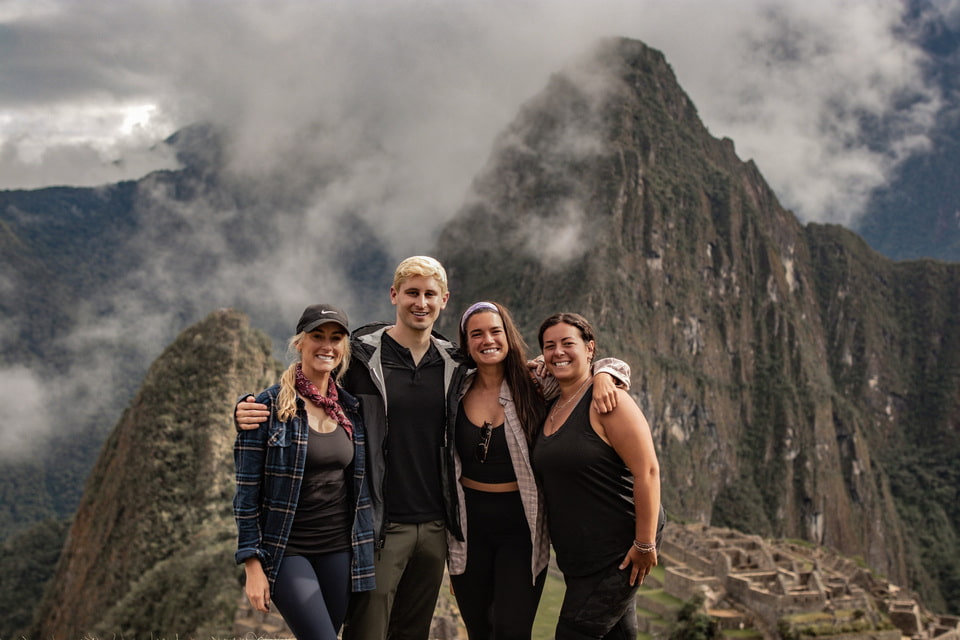
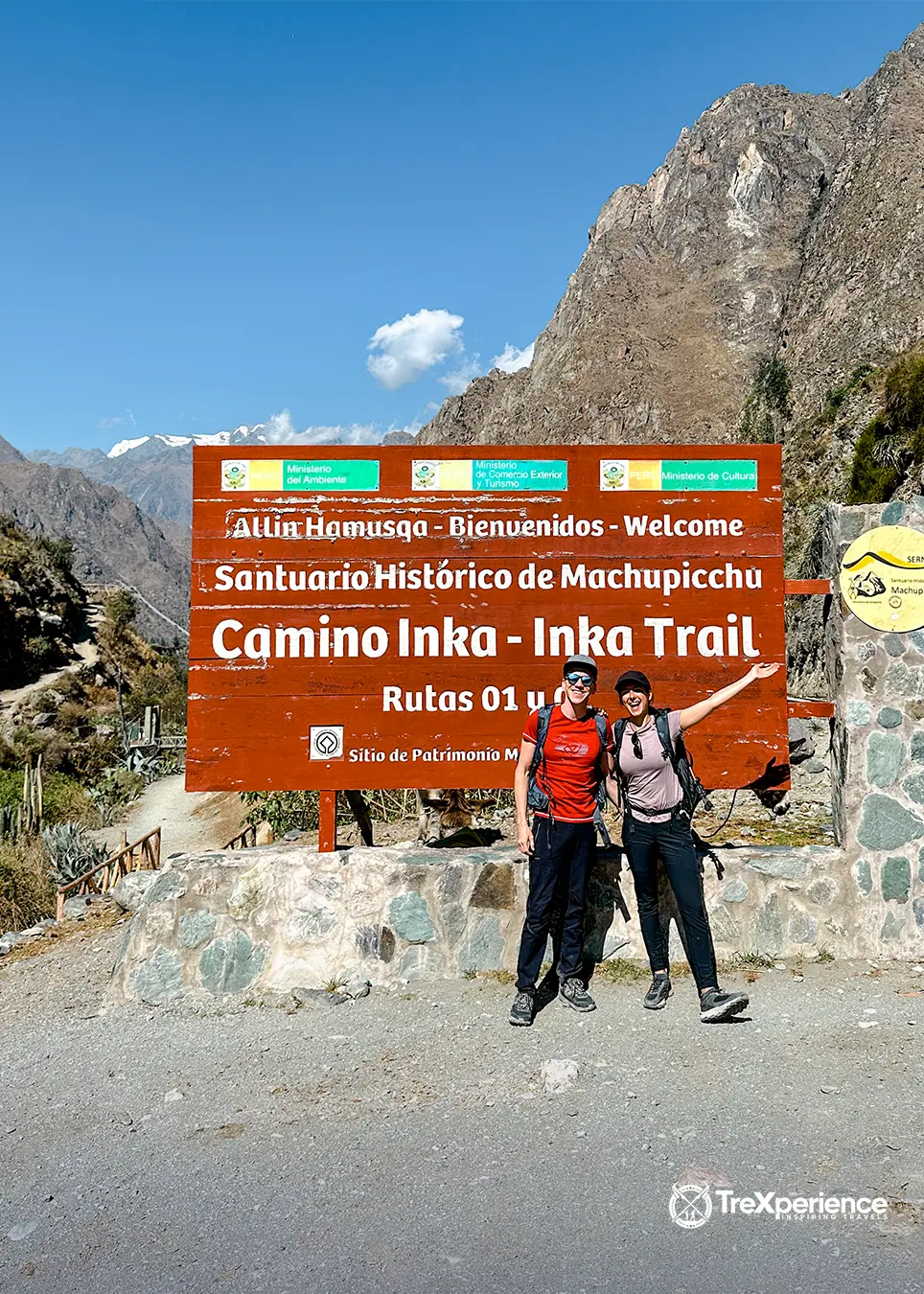
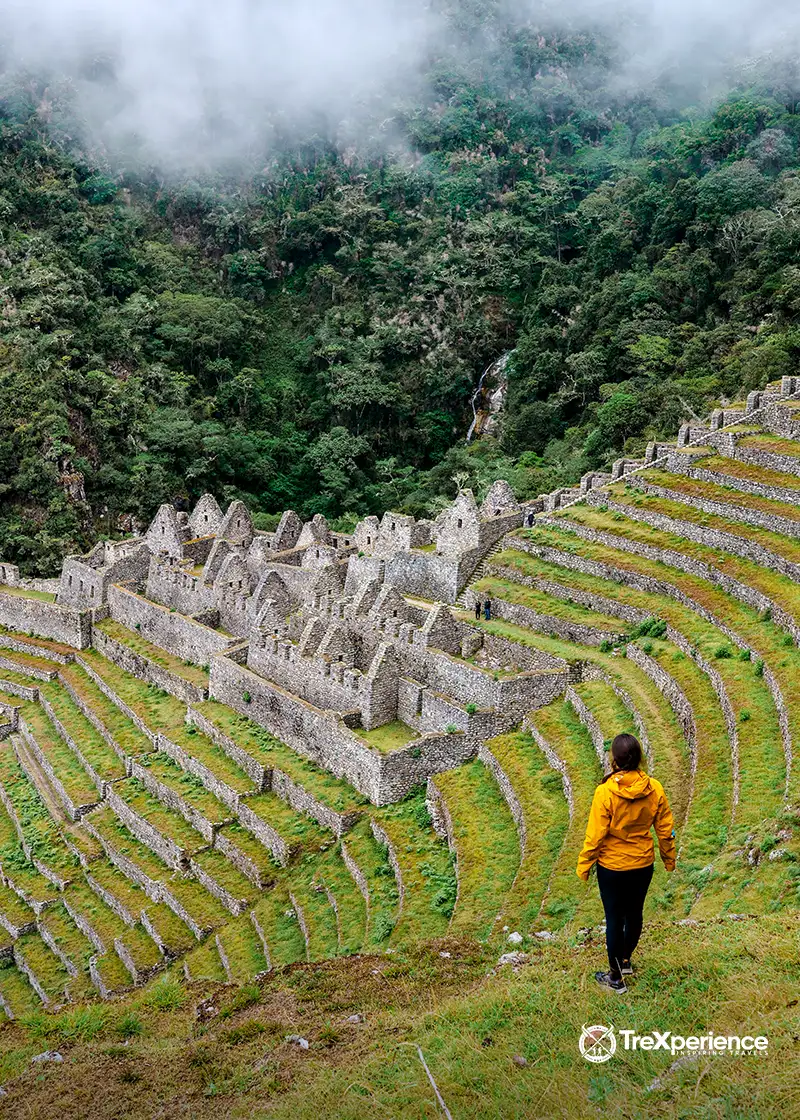
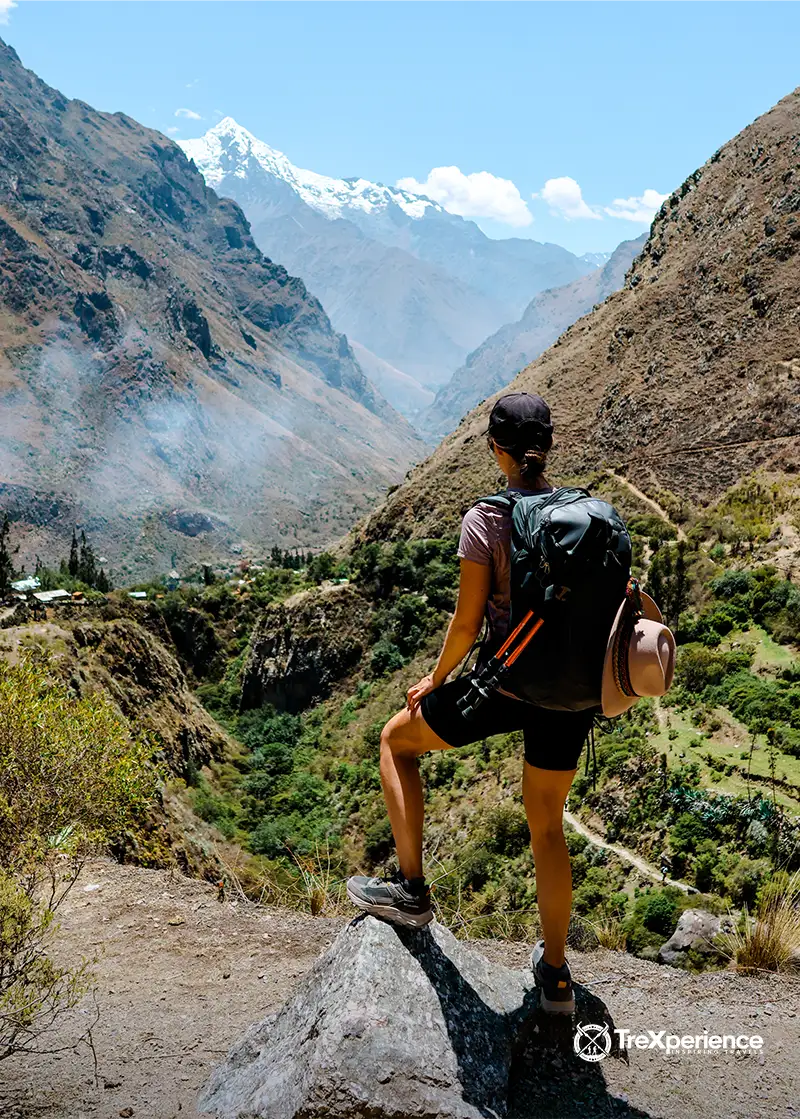
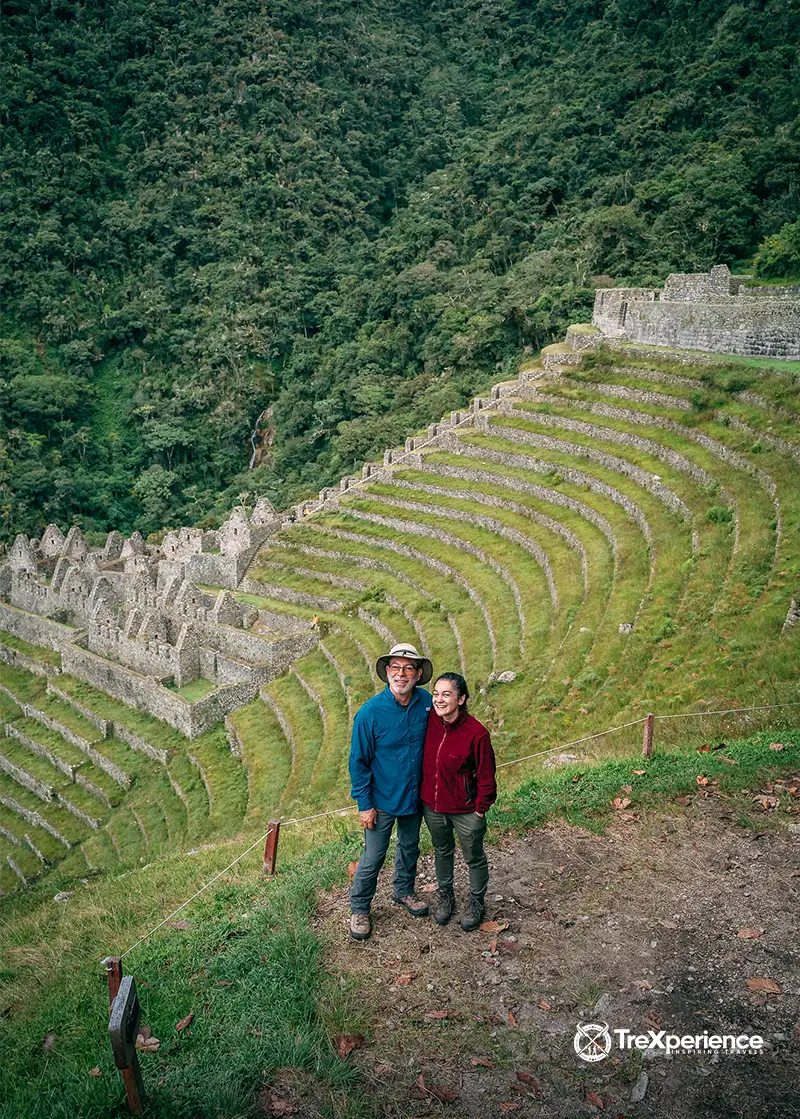
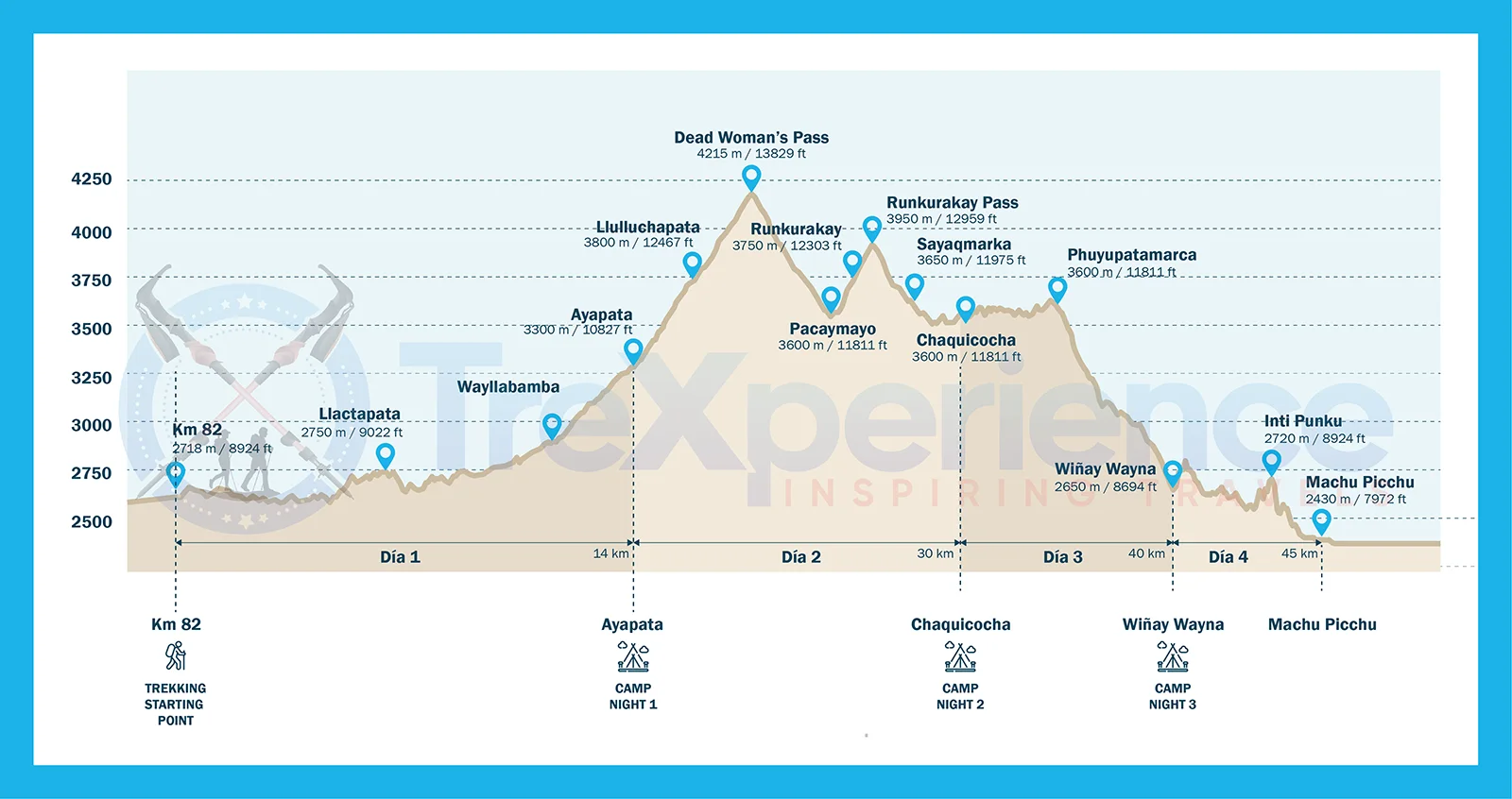
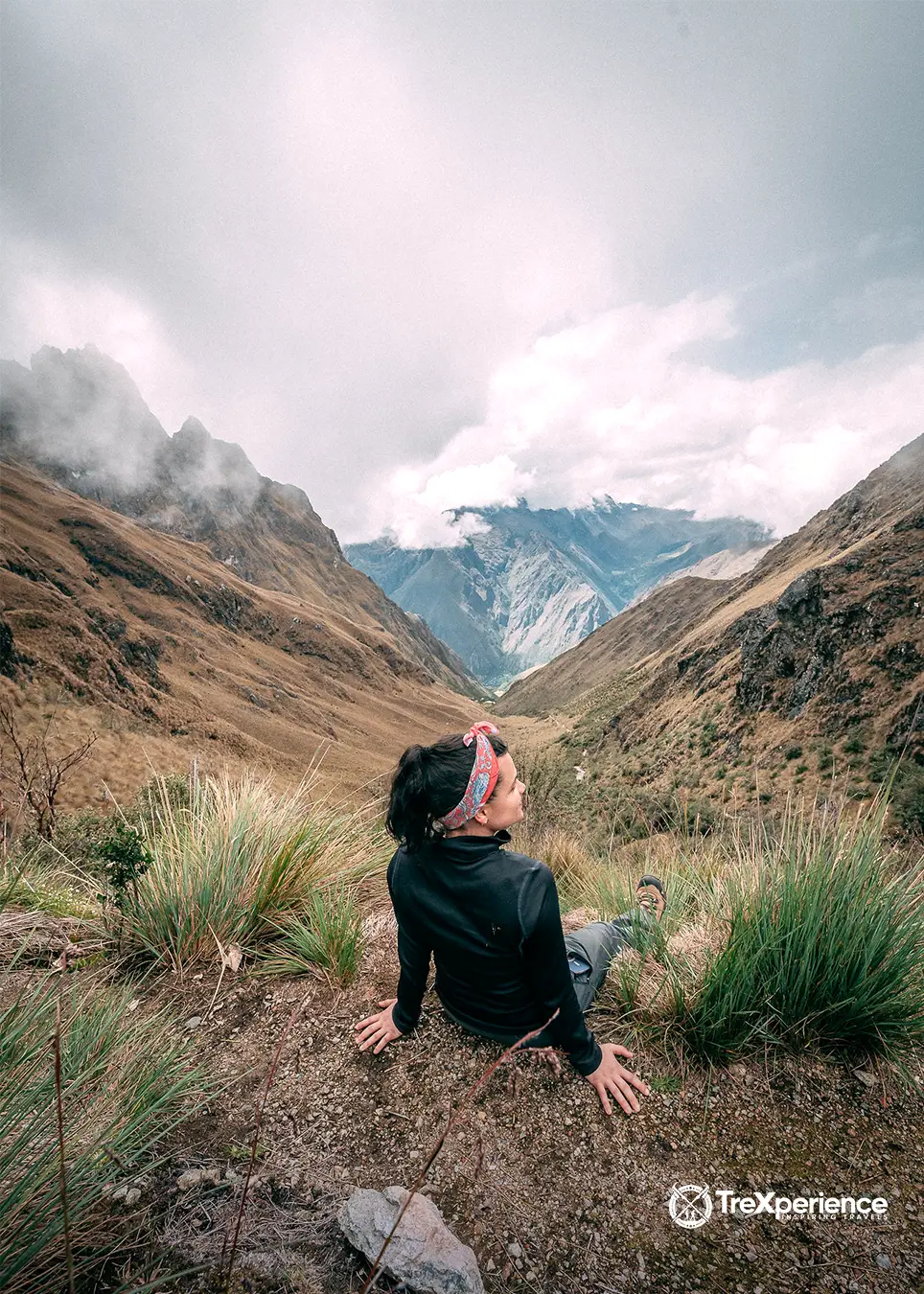
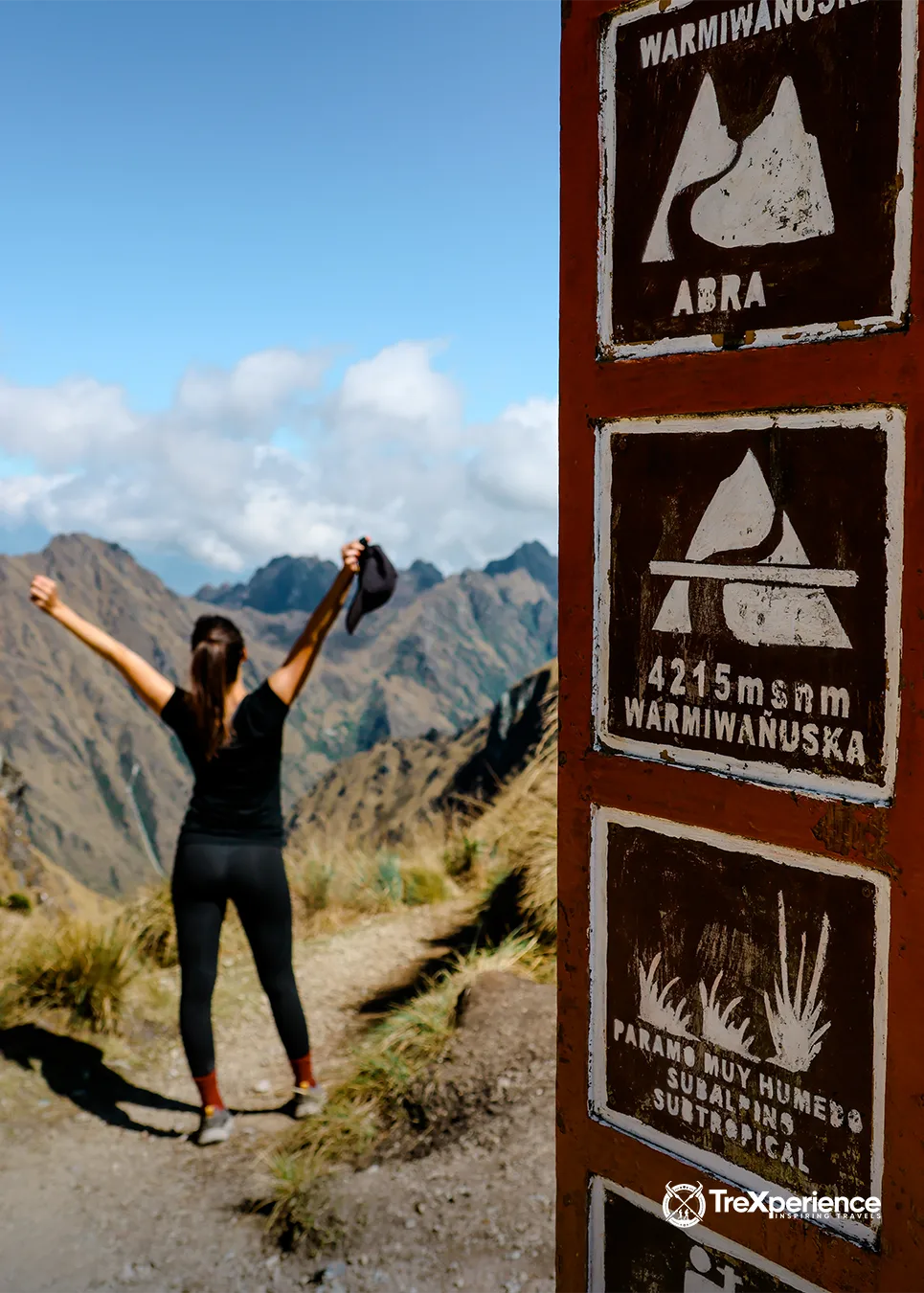

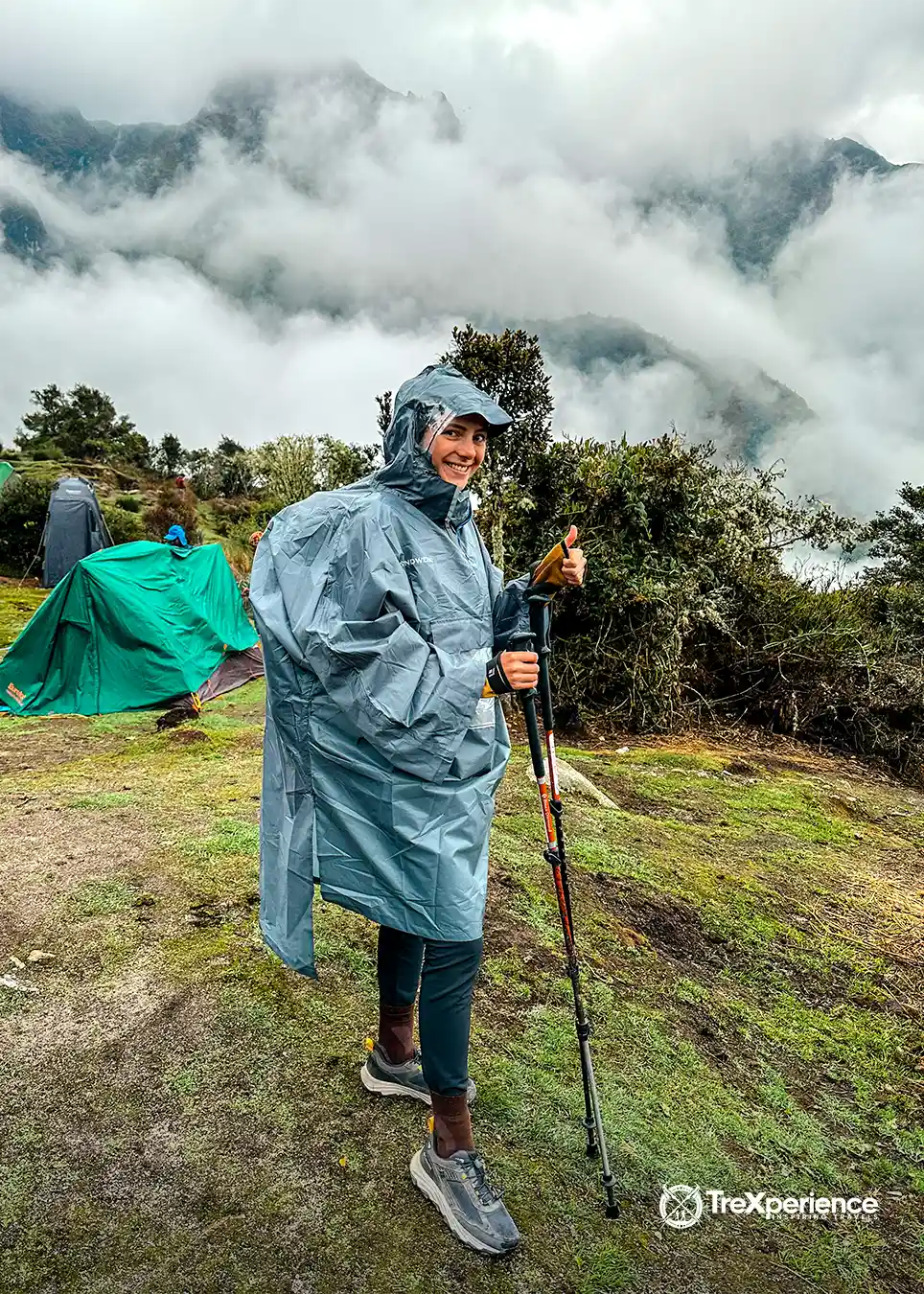
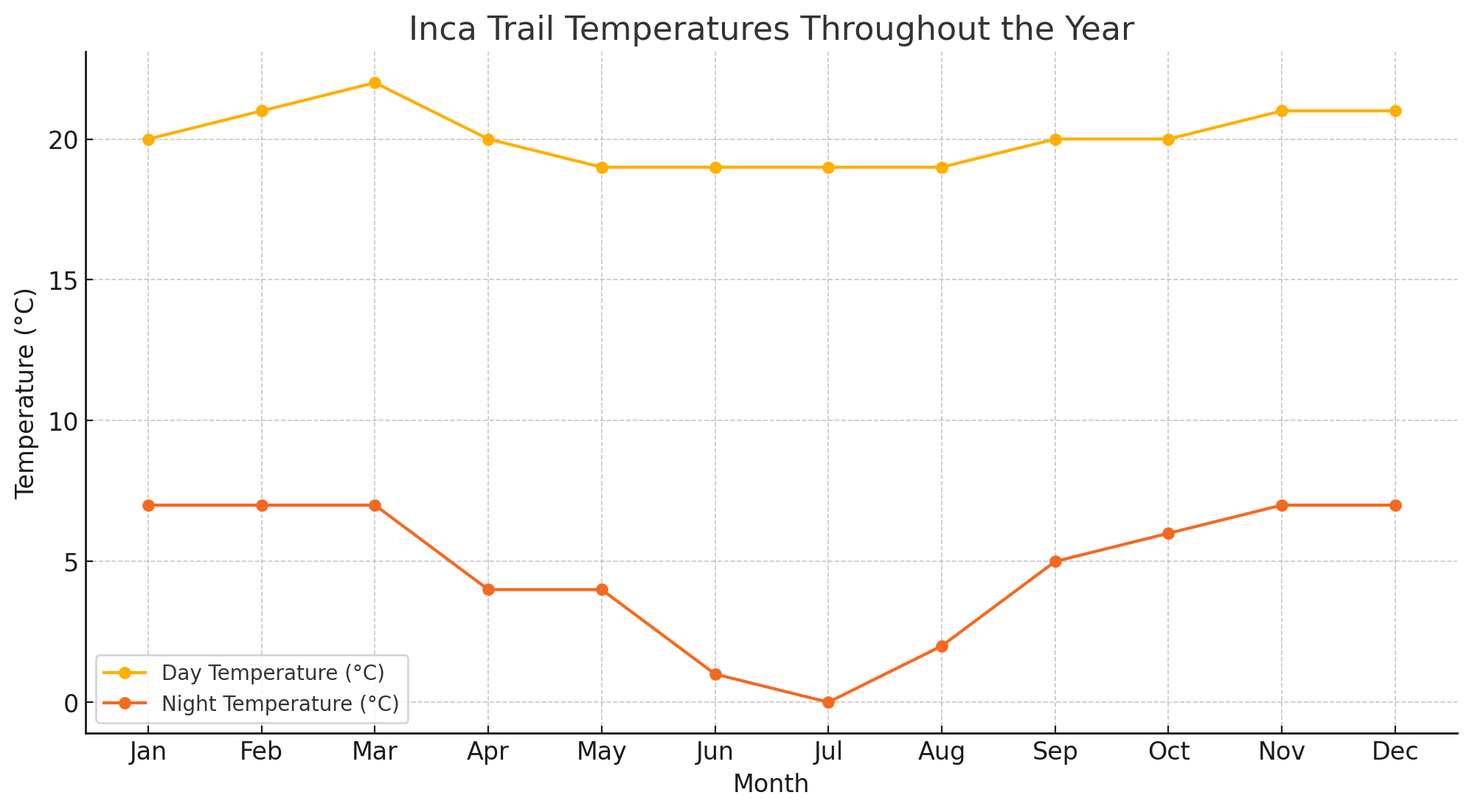
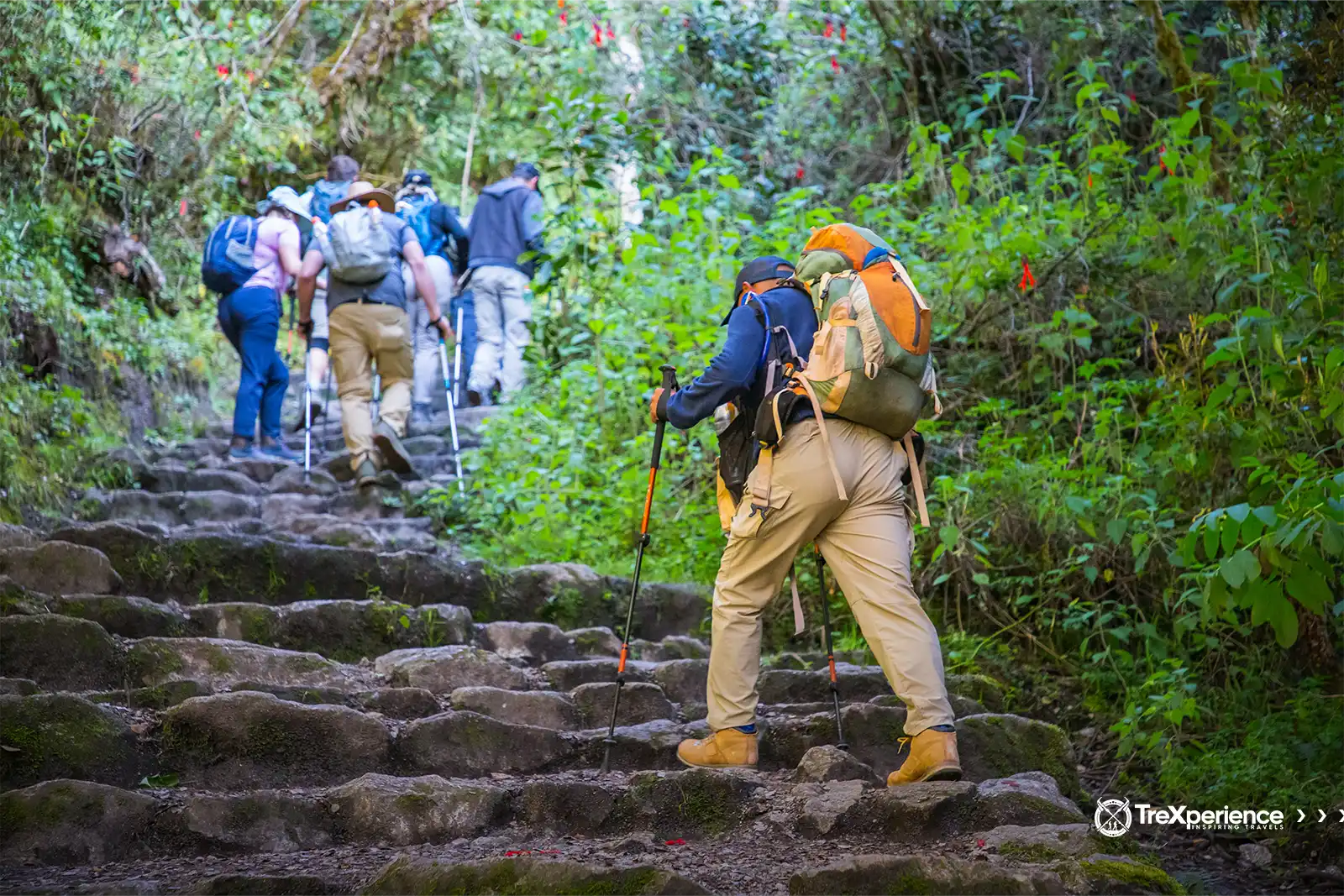
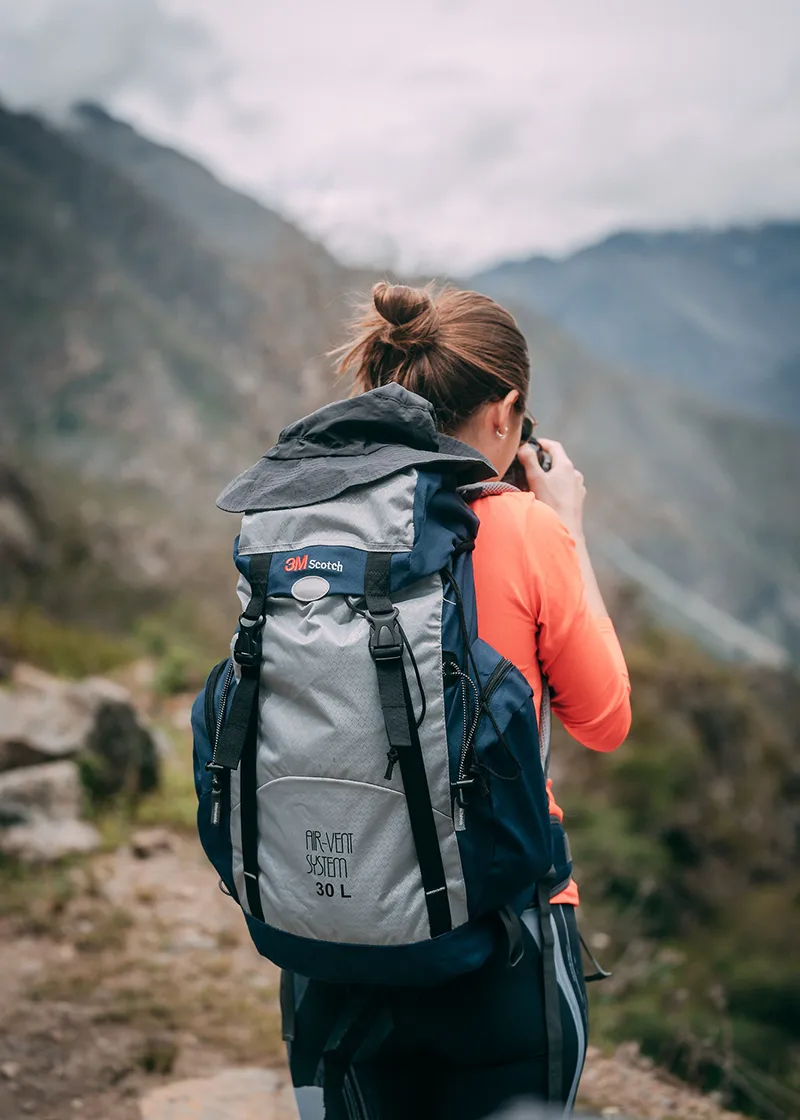
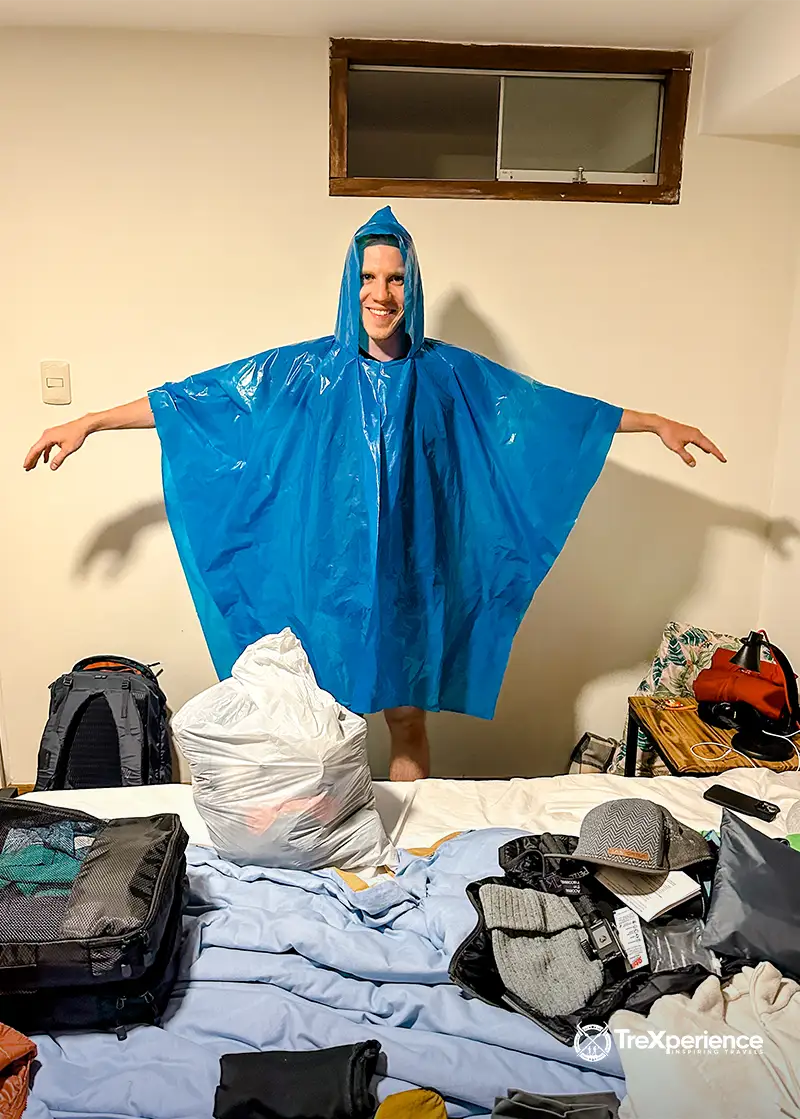
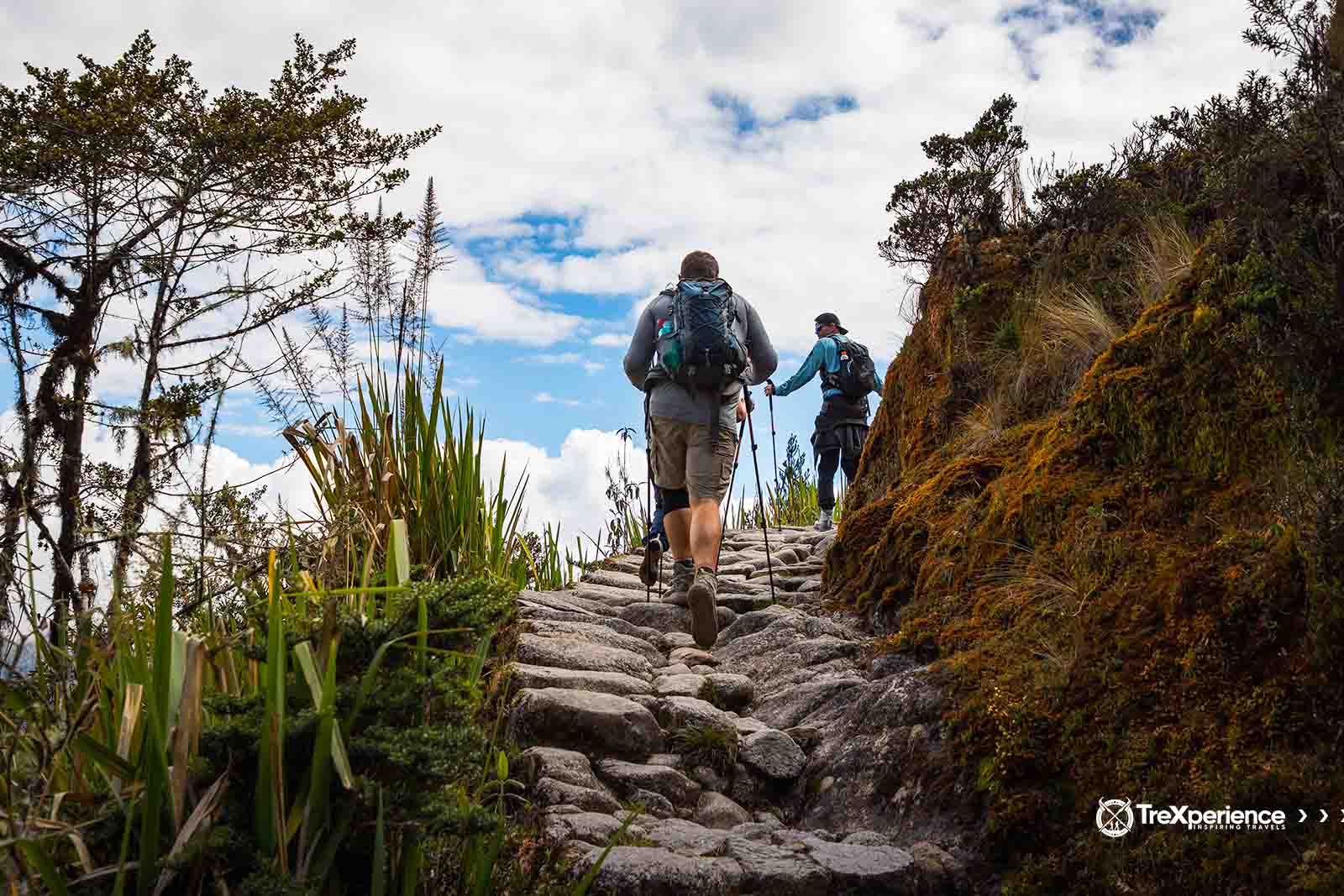
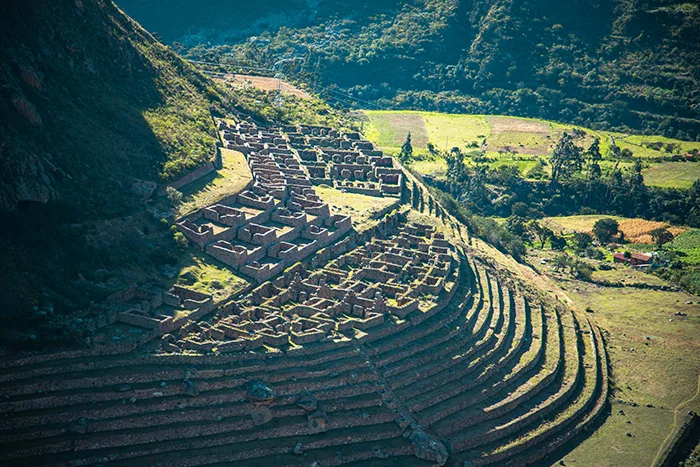
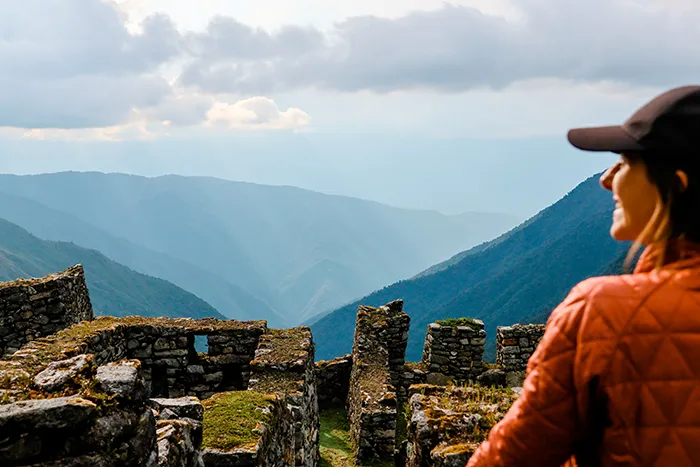
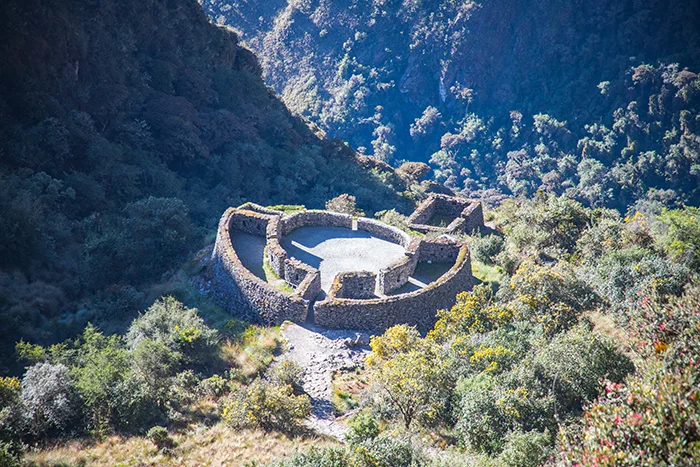
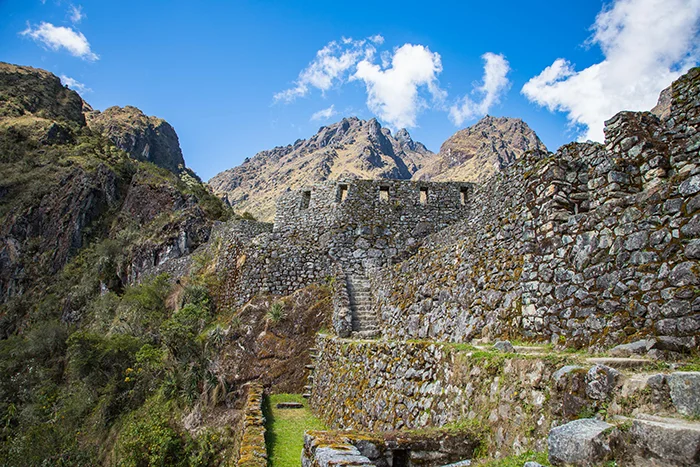
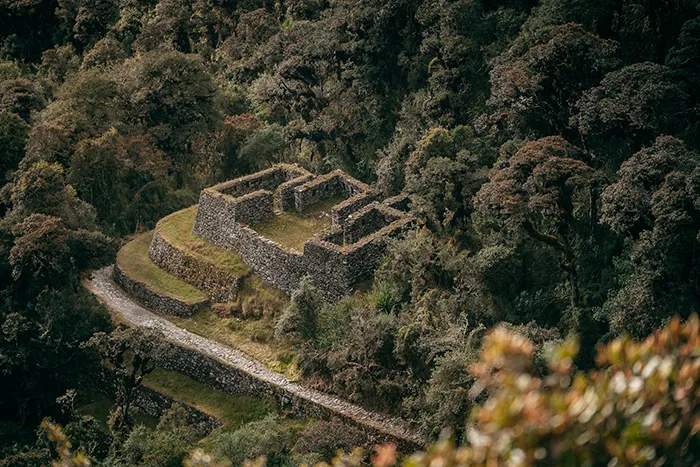
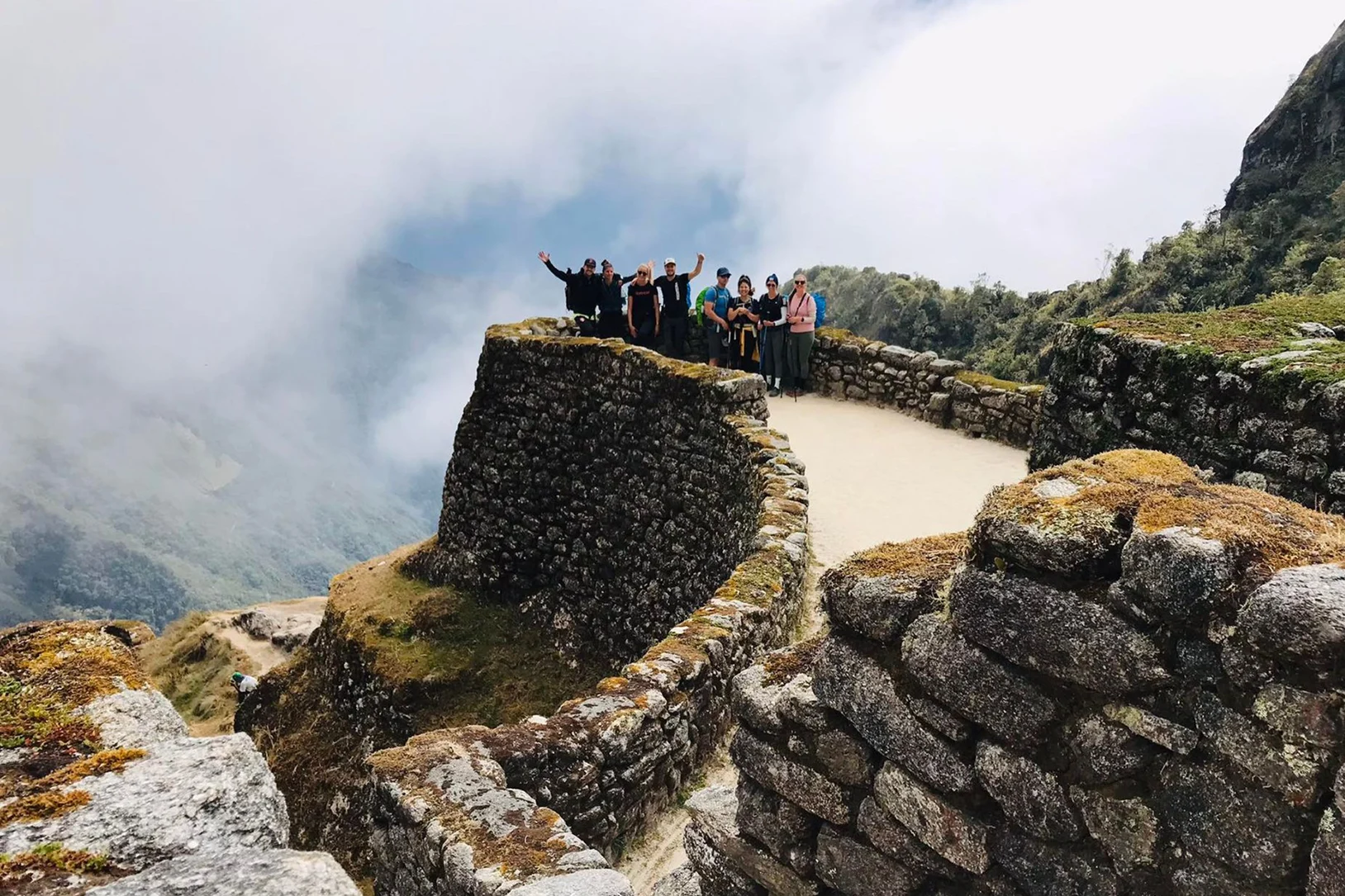
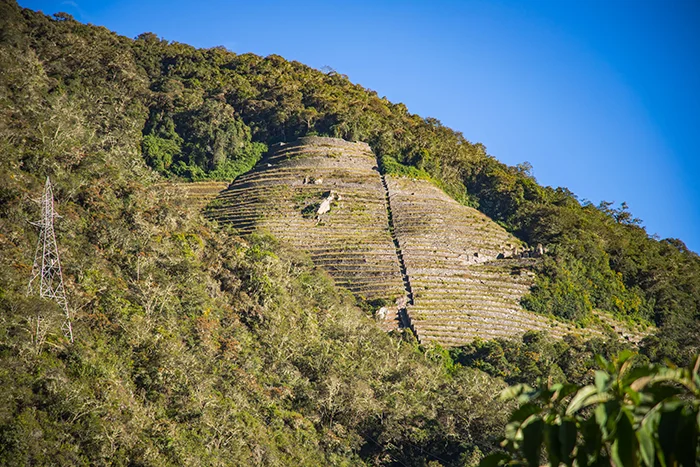
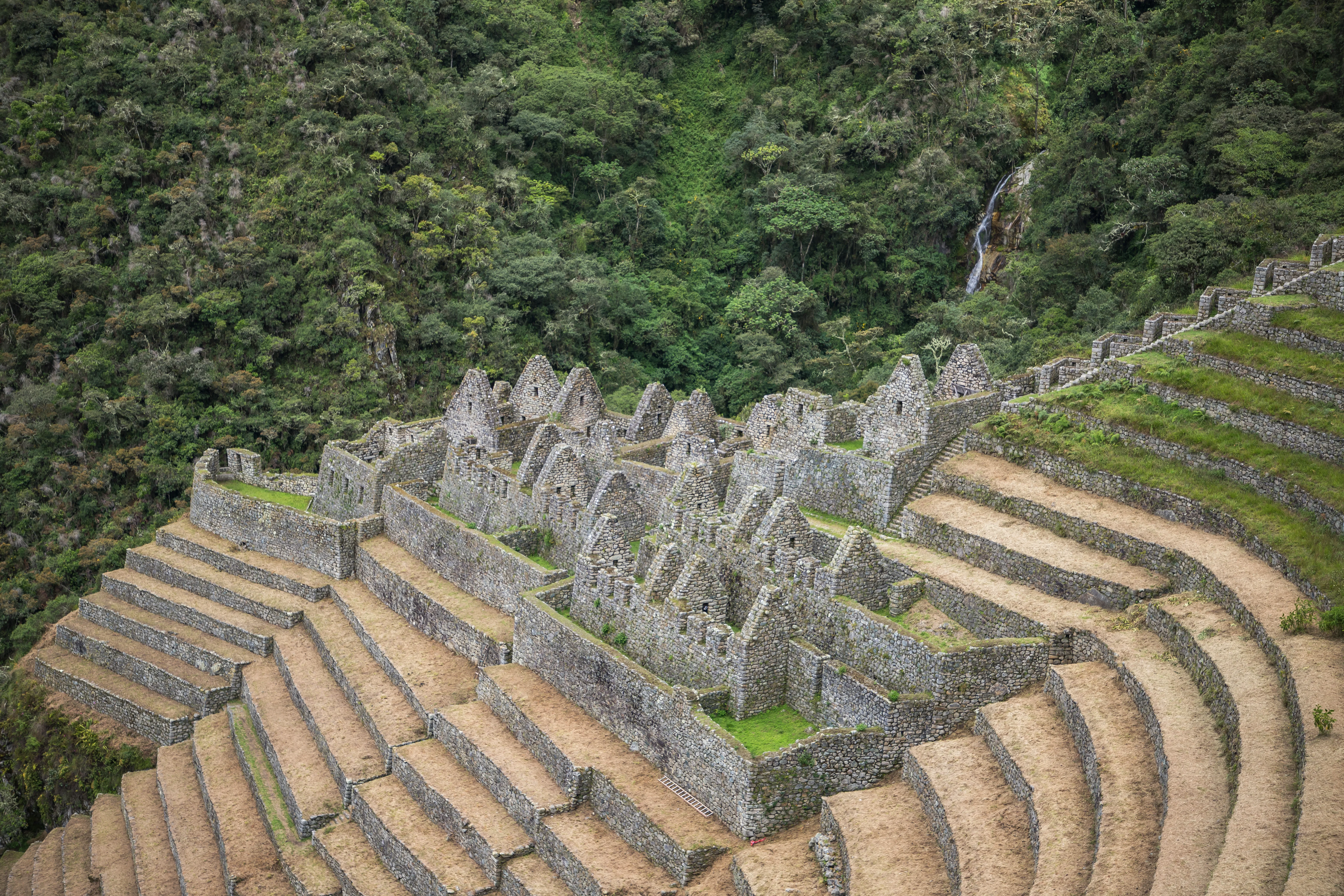
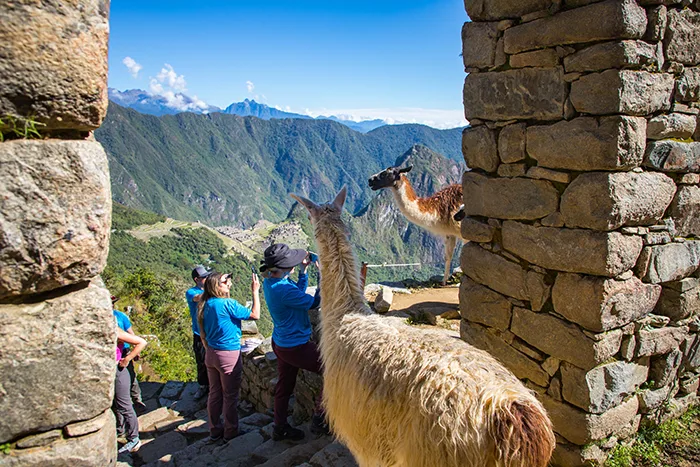
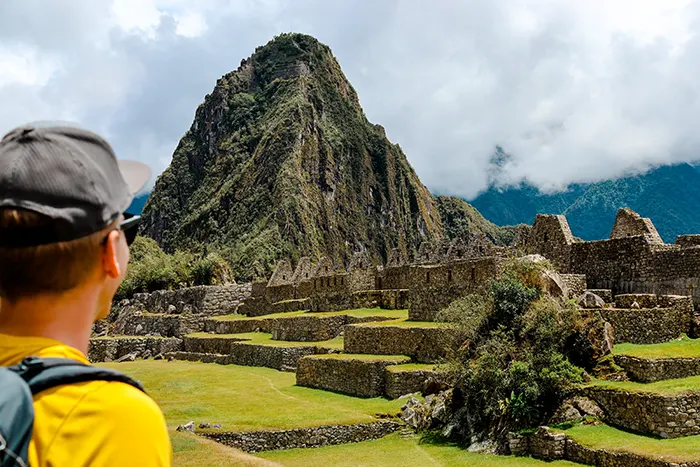
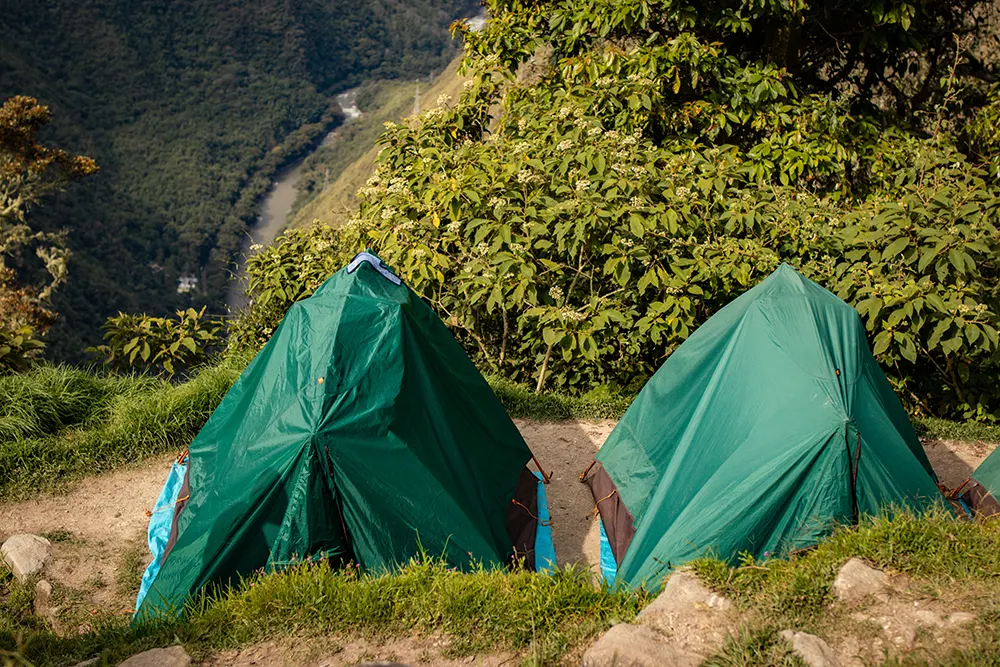
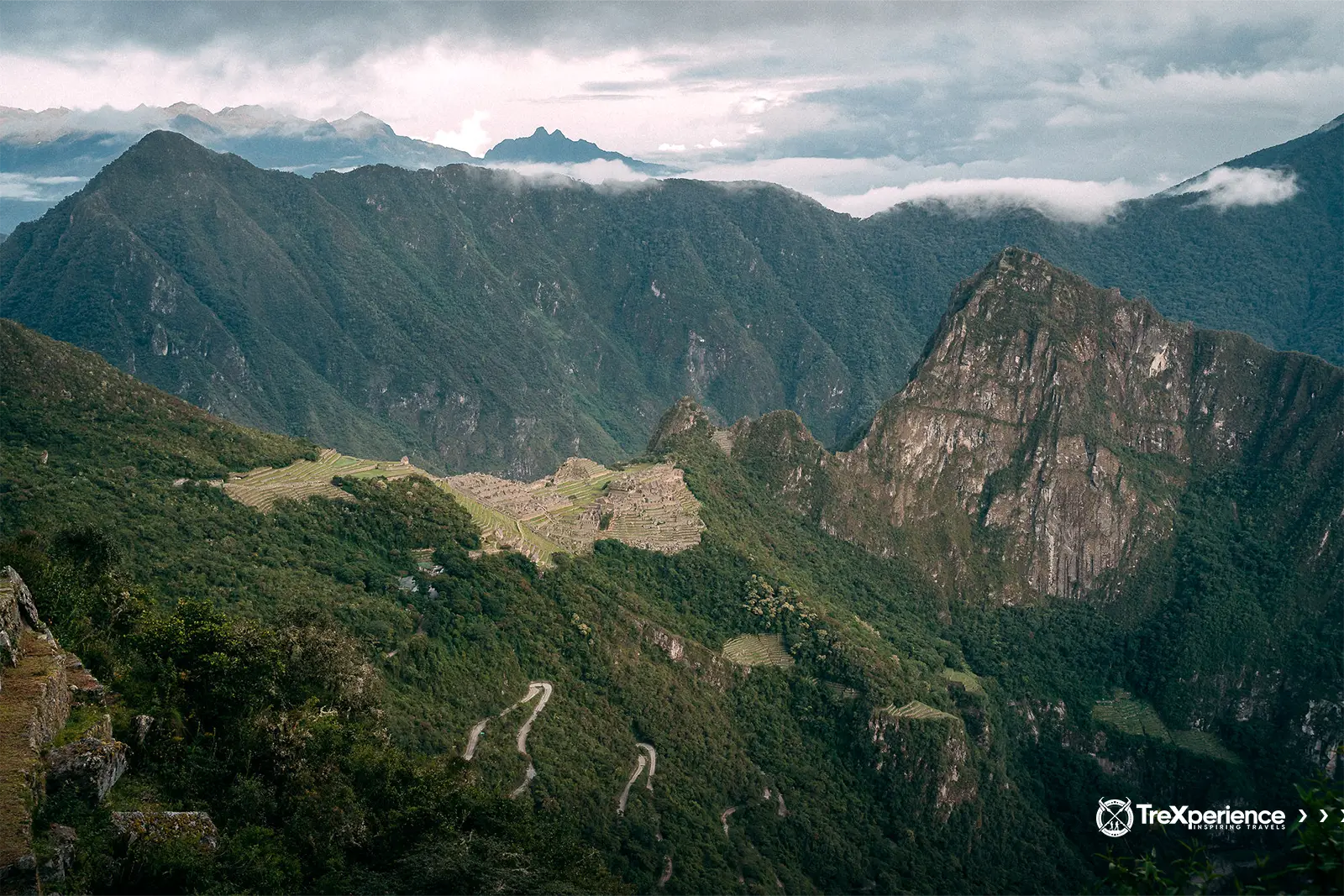
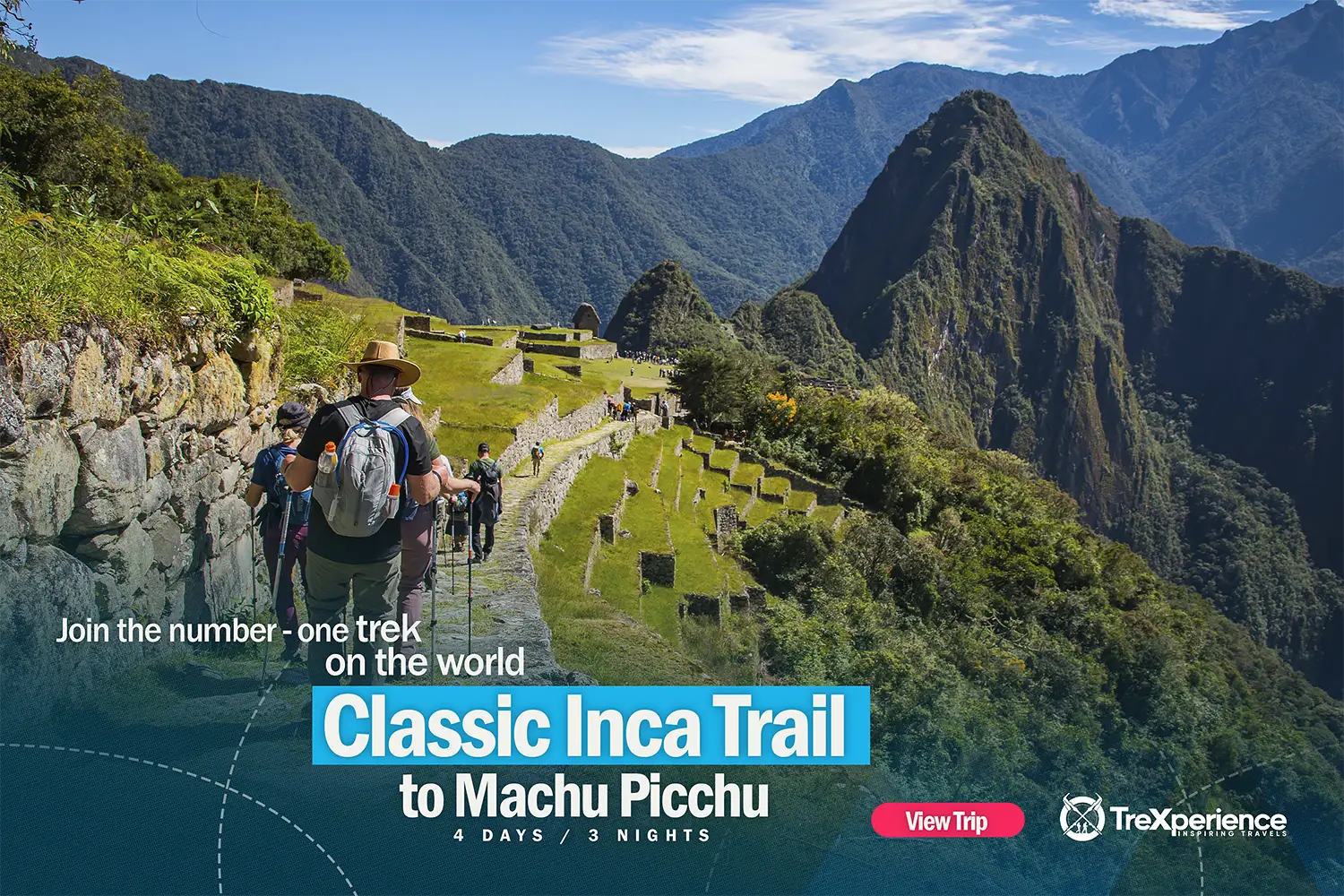
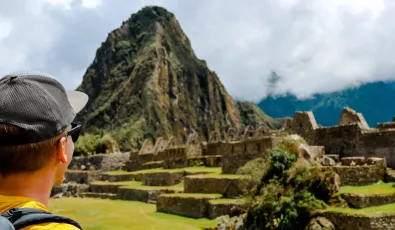
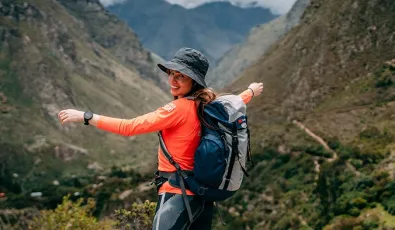
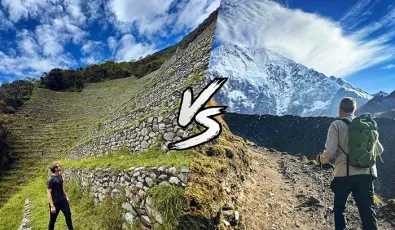
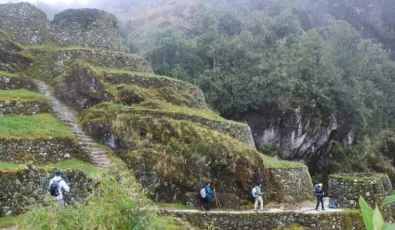
Add new comment